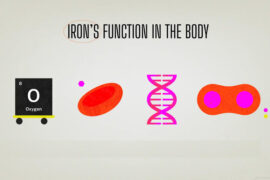As air pollution levels continue to rise in various regions, young children, particularly those aged 0 to 5, face heightened health risks. This escalating air pollution poses a significant threat to their well-being, necessitating urgent action. To safeguard the health and safety of these vulnerable children, the focus should be on minimizing their exposure to indoor pollution. It is crucial to comprehend why children are more susceptible to the adverse effects of poor air quality and explore effective measures to protect them, including the potential benefits of air purifiers. Prioritizing the reduction of indoor pollution and raising awareness about the unique vulnerabilities of young children is essential to ensure a healthier future for the next generation.
Why Children Are More Susceptible to Air Pollution?
Young children, particularly those under the age of five, are more vulnerable to the adverse effects of pollution for several reasons. Firstly, their respiratory systems are still in the developmental stage, and their smaller airways make them more susceptible to respiratory infections, asthma, and other pulmonary issues. Secondly, their immune systems are in the process of maturing, rendering them more prone to the harmful consequences of air pollution. It’s crucial to note that these vulnerabilities extend to indoor environments as well, where pollutants can infiltrate and pose significant health risks to young children.
Nanoparticles or particulate matter 2.5 (PM2.5) are minuscule particles suspended in the air, measuring approximately 2.5 microns in size. Due to their tiny dimensions, when inhaled, they can penetrate deeply into the lungs, potentially causing permanent changes and damage, particularly in children who are still growing. This damage can result in reduced lung capacity as they mature, increasing the likelihood of future lung-related health issues. Thus, understanding the unique susceptibility of young children to air pollution and its specific effects on their developing bodies is crucial for their long-term well-being and underscores the importance of taking measures to reduce their exposure.
Strategies to Safeguard Children from Air Pollution:
Precautions Indoors:
1. proper ventilation
Ensuring proper ventilation is a critical strategy for protecting indoor air quality and safeguarding against the harmful effects of air pollution. When pollution levels are lower, opening windows allows fresh outdoor air to circulate indoors, diluting any indoor pollutants. Additionally, utilizing air vents and proper ventilation systems can enhance airflow, effectively reducing the concentration of harmful indoor pollutants. By prioritizing ventilation, we can create healthier indoor environments for our families and mitigate the impact of air pollution on our well-being.
2. Limiting exposure:
Limiting exposure is a key step in protecting children from the detrimental effects of air pollution. By keeping children indoors during peak pollution hours, we can significantly reduce their exposure to harmful pollutants. This proactive measure helps safeguard their respiratory health and overall well-being, especially during times when air quality is at its worst.
3. Clean zones:
Establishing clean zones within the home, equipped with air purifiers, is an effective way to create safer environments for children. These designated areas can provide a breath of fresh air by reducing indoor pollutants, ensuring that the air children breathe is of better quality. By using air purifiers in these clean zones, we can enhance the indoor air quality and minimize the health risks associated with air pollution, contributing to the well-being of our young ones.
4. Reducing indoor pollutants:
Reducing indoor pollutants is essential for maintaining better indoor air quality, especially for the well-being of children. Controlling indoor sources of pollution, including tobacco smoke, scented candles, and certain cleaning products, is a proactive measure to minimize their exposure to harmful substances. By eliminating or limiting these sources, we can create a healthier indoor environment, reducing the risks associated with air pollution and contributing to the overall health and safety of our children.
Air purifier help:
Air purifiers are gaining popularity in households, particularly among families with young children, aiming to provide a cleaner and healthier indoor environment. When selecting an air purifier for young children, there are specific factors to consider:
- Type of Filter: Opt for air purifiers equipped with high-efficiency particulate air (HEPA) filters, as they are highly effective in capturing airborne particles, allergens, and pollutants, ensuring efficient filtration.
- Size and Placement: Choose an air purifier that is appropriately sized for the space and strategically place it in areas where children spend most of their time, such as bedrooms or play areas.
- Noise and Energy Consumption: Take into account the noise levels and energy consumption of the purifier to ensure it doesn’t disrupt a child’s sleep and operates efficiently.
- Maintenance: Regular maintenance and timely filter replacement are essential to maintain the purifier’s optimal performance. Follow the manufacturer’s guidelines for proper upkeep.
While air purifiers can play a valuable role in safeguarding children from indoor pollutants, it’s important to remember that they should be a part of a comprehensive strategy. This strategy should include practices like proper ventilation, minimizing exposure to outdoor pollution, and controlling indoor sources of pollution. By integrating these measures, families can create a healthier and safer environment for their children.
Disclaimer:
The information contained in this article is for educational and informational purposes only and is not intended as a health advice. We would ask you to consult a qualified professional or medical expert to gain additional knowledge before you choose to consume any product or perform any exercise.






